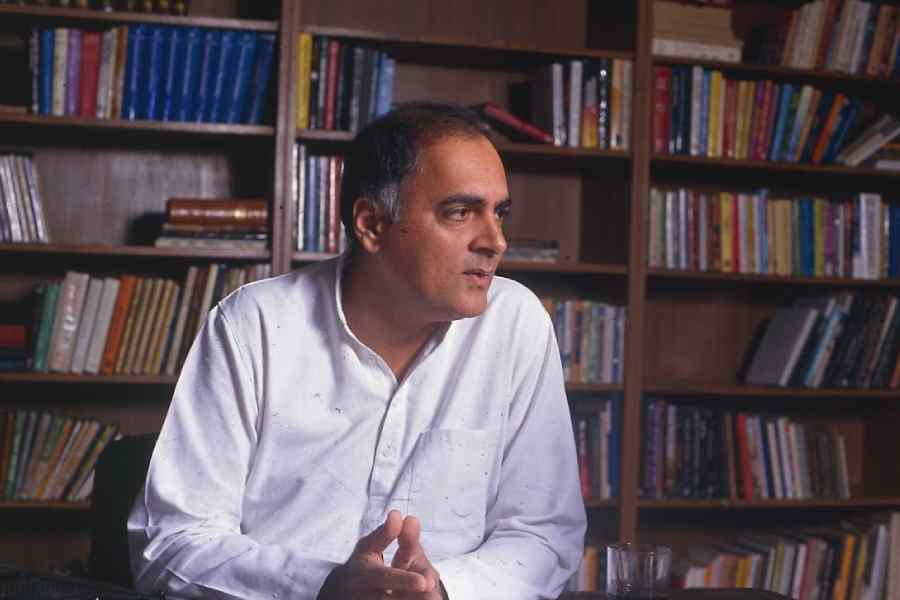Indian scientists trying to design antiviral molecules from scratch have stumbled upon a class of compounds that they say could be effective against viruses that cause the common cold, for which there is currently no treatment.
The scientists at the Birla Institute of Technology, Ranchi, have discovered a molecule that can block rhinoviruses — the group of viruses that cause upper respiratory tract infections, colds and sore throats — from invading and multiplying in human cells.
In collaborative research with scientists from Belgium and Finland, a BIT team has found that the molecule code-named “compound 17” binds itself to a previously unknown pocket, or region, of the outer surface protein of rhinoviruses.
The viruses use the pocket — a tiny 3-dimensional structure on their surfaces — to enter and infect human host cells. Electron microscopic images show that compound 17 attaches itself to the pocket and renders rhinoviruses incapable of entering host cells.
The scientists have published their experimental results in the journal PLOS Biology. “We’re hoping this previously unidentified protein pocket is the Achilles’ heel in rhinoviruses,” said Venketasan Jayaprakash, an associate professor of pharmaceutical sciences at the BIT. “This is an important group of viruses that cause significant infections and misery worldwide.”
Studies from across the world show that children can be infected by rhinoviruses eight to 12 times a year while adults can be infected two to three times a year.
Rhinovirus infections can trigger exacerbations of asthma and chronic pulmonary disease.
Although over 90 antiviral drugs are in use against herpes, influenza, hepatitis B, hepatitis C and the human immunodeficiency virus, among others, an effective commercial therapy for rhinovirus infections has remained elusive.
The discovery by the Ranchi scientists and their European partners was serendipitous.
At the BIT, Barij Nayan Sinha, Jayaprakash and Ajay Kumar had set out to design a molecule against the dengue virus.
They used digital libraries of chemical compounds and viral protein structures to design compound 17 and sent it to the laboratory of Johan Nyets, professor of virology at the Rega Institute for Medical Research, Leuven, Belgium, to test its efficacy against the dengue virus.
Nyets and his colleagues found that compound 17 blocked rhinoviruses as well as enteroviruses, a group of viruses that cause stomach infections. Like rhinoviruses, enteroviruses too have defied all known antiviral compounds.
“Once we realised that compound 17 acts against rhinoviruses and enteroviruses, we used electron microscope studies to figure out what it exactly does,” Jayaprakash said.
“We can actually see the compound bind to this pocket, a region no one had looked at before.”
The researchers’ analysis suggests that the pocket is shared across rhinoviruses and enteroviruses, meaning compound 17 or similar molecules could serve as broad-spectrum antiviral molecules.
The researchers have already identified two other compounds that display similar antiviral activity.
The current treatments prescribed for common cold lack antiviral activity and are merely intended to relieve the patients of the symptoms. They are meant to lower the patients’ discomfort while their immune system fights the infection.
Virologists say the discovery of the pocket is significant but caution that its translation into medicine could take several years.
“A broad-spectrum antiviral that works on rhinoviruses and enteroviruses sound exciting, but such compounds would need to be tested through animal models before any clinical trials,” said Govindakarnavar Arunkumar, professor at the Manipal Centre for Virus Research, Manipal.
Scientists have earlier predicted the need for novel strategies to treat rhinoviruses.
“Novel therapeutics that interfere with rhinovirus binding, entry and replication in the host cell could yield promising results,” Peter Barlow, associate professor of immunology and infection at the Edinburgh Napier University, and his co-authors had said in a review in the journal Future Virology last year.
Jayaprakash said that compound 17 does exactly that. “It interferes with rhinovirus binding and entry into cells.”










